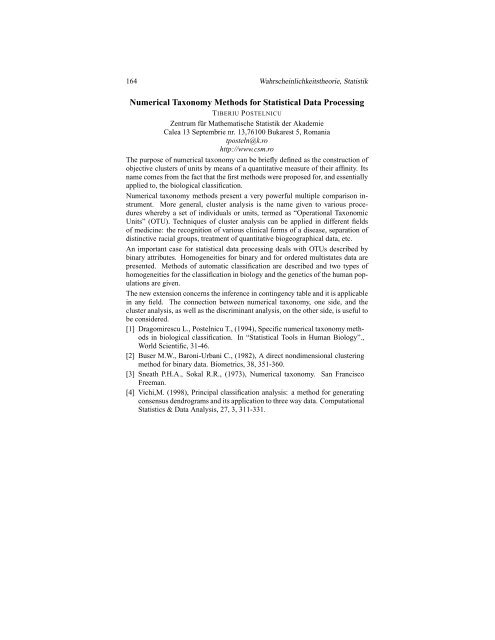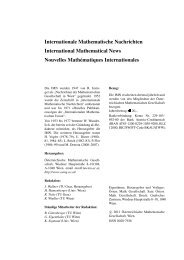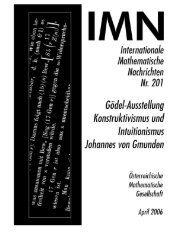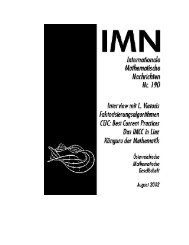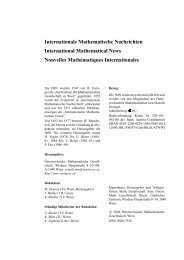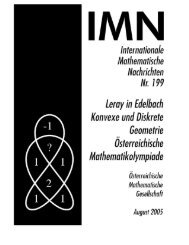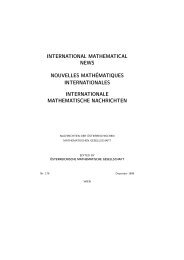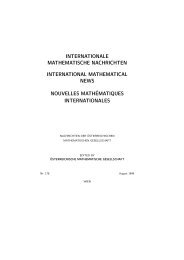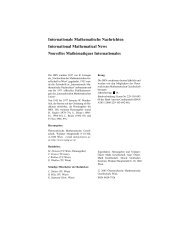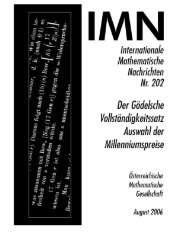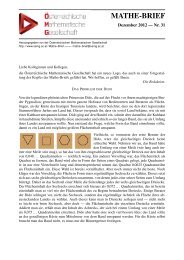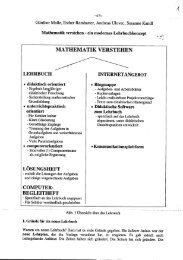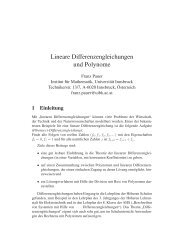Redaktion: K. Sigmund, G. Greschonig (Univ. Wien, Strudlhofgasse ...
Redaktion: K. Sigmund, G. Greschonig (Univ. Wien, Strudlhofgasse ...
Redaktion: K. Sigmund, G. Greschonig (Univ. Wien, Strudlhofgasse ...
Sie wollen auch ein ePaper? Erhöhen Sie die Reichweite Ihrer Titel.
YUMPU macht aus Druck-PDFs automatisch weboptimierte ePaper, die Google liebt.
164 Wahrscheinlichkeitstheorie, Statistik<br />
Numerical Taxonomy Methods for Statistical Data Processing<br />
TIBERIU POSTELNICU<br />
Zentrum für Mathematische Statistik der Akademie<br />
Calea 13 Septembrie nr. 13,76100 Bukarest 5, Romania<br />
tposteln@k.ro<br />
http://www.csm.ro<br />
The purpose of numerical taxonomy can be briefly defined as the construction of<br />
objective clusters of units by means of a quantitative measure of their affinity. Its<br />
name comes from the fact that the first methods were proposed for, and essentially<br />
applied to, the biological classification.<br />
Numerical taxonomy methods present a very powerful multiple comparison instrument.<br />
More general, cluster analysis is the name given to various procedures<br />
whereby a set of individuals or units, termed as “Operational Taxonomic<br />
Units” (OTU). Techniques of cluster analysis can be applied in different fields<br />
of medicine: the recognition of various clinical forms of a disease, separation of<br />
distinctive racial groups, treatment of quantitative biogeographical data, etc.<br />
An important case for statistical data processing deals with OTUs described by<br />
binary attributes. Homogeneities for binary and for ordered multistates data are<br />
presented. Methods of automatic classification are described and two types of<br />
homogeneities for the classification in biology and the genetics of the human populations<br />
are given.<br />
The new extension concerns the inference in contingency table and it is applicable<br />
in any field. The connection between numerical taxonomy, one side, and the<br />
cluster analysis, as well as the discriminant analysis, on the other side, is useful to<br />
be considered.<br />
[1] Dragomirescu L., Postelnicu T., (1994), Specific numerical taxonomy methods<br />
in biological classification. In “Statistical Tools in Human Biology”.,<br />
World Scientific, 31-46.<br />
[2] Buser M.W., Baroni-Urbani C., (1982), A direct nondimensional clustering<br />
method for binary data. Biometrics, 38, 351-360.<br />
[3] Sneath P.H.A., Sokal R.R., (1973), Numerical taxonomy. San Francisco<br />
Freeman.<br />
[4] Vichi,M. (1998), Principal classification analysis: a method for generating<br />
consensus dendrograms and its application to three way data. Computational<br />
Statistics & Data Analysis, 27, 3, 311-331.


